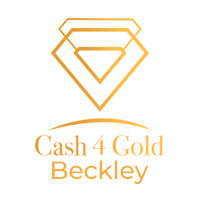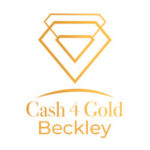The Pros and Cons of Selling Your Jewelry Online vs. In-Person

Selling jewelry can be challenging, especially when deciding between online and in-person sales. Each method has unique benefits and drawbacks that impact profitability, customer reach, and operational efficiency. Choosing the wrong platform could mean missed sales, higher costs, or unsatisfied customers. Online sellers face fierce competition and shipping hassles, while in-person sellers struggle with limited reach and high overhead expenses.
This comprehensive guide breaks down the pros and cons of both approaches, helping you make an informed decision. Understanding these key differences will optimize your sales strategy, whether you’re a small artisan or an established jeweler.
Table of Contents
Selling Jewelry Online: Pros
1. Wider Audience Reach
One of the biggest advantages of selling jewelry online is the ability to reach a global audience. Unlike a physical store limited by geography, an online shop allows customers from different cities, states, or even countries to browse and purchase your pieces. Platforms like Etsy, eBay, and Instagram provide exposure to millions of potential buyers. Social media marketing and search engine optimization (SEO) can further amplify your visibility, ensuring your jewelry gets in front of the right people. This expanded reach increases sales opportunities and helps build a loyal customer base over time
2. Lower Overhead Costs
Running an online jewelry business typically involves fewer expenses compared to a brick-and-mortar store. You don’t have to worry about rent, utility bills, or in-person staff salaries. Instead, costs are mainly tied to website hosting, digital marketing, and shipping. Many online sellers operate from home, reducing startup costs significantly. Additionally, platforms like Shopify or WooCommerce offer affordable e-commerce solutions with customizable storefronts, making it easier to establish a professional online presence without a hefty investment. According to the U.S. Small Business Administration, online businesses typically have 40-60% lower startup costs than physical stores. You’ll save on expenses like commercial leases (which average $23 per square foot for retail spaces) and in-person staffing. Many successful online jewelers operate from home studios while maintaining professional digital storefronts through platforms like Big Cartel or Squarespace.
3. Convenience and Flexibility
Selling online offers unmatched flexibility in terms of working hours and business management. You can list new items, respond to customer inquiries, and process orders at any time, making it ideal for those who prefer a side hustle or a work-from-home setup. Automated tools like chatbots, inventory management systems, and payment processors streamline operations, reducing manual workload. This convenience allows jewelry sellers to scale their businesses efficiently while maintaining a better work- life balance compared to traditional retail. Managing an online jewelry business allows you to work on your schedule – a particular advantage when dealing with precious metals. If you’re selling gold jewelry, you’ll want to avoid the common pitfalls outlined in our guide on Top Mistakes to Avoid When Selling Your Gold Jewelry. The flexibility also helps when you need to adjust prices quickly based on current scrap metal values.
4. Access to Valuable Data and Analytics
Online sales platforms provide detailed analytics that can help you understand customer behavior, track sales trends, and optimize marketing strategies. Tools like Google Analytics, Facebook Insights, and Shopify reports reveal which products are popular, where traffic is coming from, and what marketing campaigns are most effective. This data-driven approach allows for informed decision-making, helping you refine your inventory, pricing, and promotional efforts to maximize profitability.
Google Analytics reveals fascinating insights about jewelry customers – for instance, mobile purchases account for 68% of fashion accessory sales. This data helps optimize your store for smartphone shoppers. The Etsy Seller Handbook provides excellent guidance on interpreting these metrics to boost conversions.
5. Ability to Showcase Jewelry Creatively
With high-quality photos, videos, and 360-degree views, online platforms allow you to present your jewelry in the best possible light. You can use lifestyle images, close-up shots, and detailed descriptions to highlight craftsmanship, materials, and unique features. Social media platforms like Instagram and Pinterest are perfect for visual storytelling, helping potential buyers envision wearing your pieces. Additionally, customer reviews and testimonials build trust, encouraging hesitant buyers to make a purchase.
Selling Jewelry Online: Cons
1. High Competition and Saturation
The online jewelry market is highly competitive, with countless sellers offering similar products. Standing out requires strong branding, unique designs, and aggressive marketing strategies. New sellers may struggle to gain traction without a solid digital presence or budget for ads. Additionally, large e-commerce platforms often favor established sellers with higher sales volumes, making it harder for newcomers to rank in search results. The jewelry category on Etsy alone features over 10 million listings, making differentiation crucial. A Jewelers Board of Trade report suggests focusing on niche markets like sustainable materials or custom designs to stand out.
2. Shipping and Handling Challenges
Shipping jewelry involves risks such as lost packages, damage during transit, and fraudulent returns. Precious metals and gemstones require secure packaging and insurance, adding to operational costs. International shipping can also bring complications like customs fees and longer delivery times, potentially frustrating customers. Managing returns and exchanges remotely can be time-consuming, especially if buyers are unhappy with the product’s appearance in person. When shipping valuable items, proper packaging is crucial – especially for gold pieces. Our The Best Way to Sell Your Scrap Gold covers secure shipping methods that prevent damage during transit. This becomes doubly important when dealing with heirloom pieces versus scrap materials.
3. Lack of Personal Interaction
Unlike in-person sales, online transactions lack the personal touch of face-to-face interactions. Customers cannot try on jewelry before purchasing, which may lead to higher return rates. Building trust can be challenging, especially for high-value items where buyers want assurance of authenticity. Scams and counterfeit concerns also make some customers hesitant to buy jewelry online without seeing it in person first.
4. Dependence on Technology and Digital Marketing
Running an online jewelry business requires continuous effort in digital marketing, SEO, and social media engagement. Without consistent updates, your listings may get buried under competitors’ posts. Technical issues like website crashes, payment gateway failures, or algorithm changes on platforms like Etsy or Amazon can disrupt sales. Keeping up with digital trends demands time and expertise, which may be overwhelming for some sellers.
Selling Jewelry In-Person: Pros
1. Immediate Sales and Cash Flow
In-person sales allow for instant transactions, eliminating the waiting period associated with online payments and shipping. Customers can pay and walk away with their purchases on the same day, improving cash flow. This is especially beneficial for sellers at flea markets, craft fairs, or pop-up shops where impulse buys are common. Face-to-face interactions also enable upselling and bundling, increasing average order value.
2. Personal Customer Experience
Physical interactions create a memorable shopping experience where customers can touch, try on, and examine jewelry up close. Sellers can build rapport, answer questions in real time, and offer styling advice, fostering stronger customer loyalty. Personalized service often leads to repeat buyers and word-of-mouth referrals, which are invaluable for small businesses.
3. Reduced Shipping and Return Hassles
Selling in person eliminates shipping costs, delays, and the risk of lost packages. Returns are less frequent since buyers inspect items before purchasing. This minimizes logistical headaches and ensures higher customer satisfaction. For high-end jewelry, in-person sales also reduce fraud risks associated with online transactions.
Ready to sell your scrap gold for top prices?
Selling Jewelry In-Person: Cons
1. Limited Customer Reach
Physical stores or markets are restricted to local buyers, limiting growth potential. Foot traffic depends on location, and poor visibility can hurt sales. Unlike online stores, in-person sales don’t benefit from global exposure, making it harder to scale quickly.
2. Higher Operational Costs
Renting a retail space, paying utilities, and hiring staff significantly increase overhead expenses. Trade shows and craft fairs also involve booth fees, travel costs, and setup investments. These fixed costs can eat into profits, especially for small-scale sellers. When maintaining a physical location, you might consider diversifying into scrap metals to offset costs. However, as our Top 5 Scrap Metal Selling Considerations article explains, proper licensing and scales are additional expenses to factor in.
3. Time-Consuming and Labor-Intensive
Managing a physical store or attending events requires long hours, manual inventory tracking, and constant customer engagement. Unlike online automation, in-person sales demand hands-on effort, which may not suit everyone’s lifestyle.
Comparison Table: Online vs. In-Person Jewelry Sales
Factor | Online Sales | In-Person Sales |
Customer Reach | Global audience | Limited to local buyers |
Overhead Costs | Lower (no rent, minimal staffing) | Higher (rent, utilities, staff) |
Sales Speed | Delayed (shipping time) | Instant (cash transactions) |
Customer Interaction | Limited (digital only) | Personal (face-to-face) |
Shipping & Returns | Complex (fraud, damage risks) | Minimal (buyers inspect before purchase) |
Marketing Dependency | High (SEO, ads, social media needed) | Moderate (local ads, word-of-mouth) |
Frequently Asked Questions
It depends on your business model. Online sales offer scalability with lower costs, while in-person sales can yield higher margins for luxury or custom pieces due to personalized service.
Starting a jewelry store online can be highly profitable. To set yourself up for success, be sure to Do product research and consider what niche you want to serve. Obtain inventory from reputable suppliers or handcraft items.
Use insured shipping, require signatures for high-value items, and provide detailed product photos/videos to minimize disputes.
Yes, most local governments require a vendor permit or sales tax ID for in-person sales at markets, stores, or pop-up events.
Absolutely! Many jewelers use online platforms for broad reach while attending craft fairs or consignment shops for local exposure.
If you prioritize personalized service, expert guidance, and the ability to see and try on pieces before purchase, a local jewelry store might be the better choice. However, if convenience, price comparison, and access to a wider selection are your main concerns, online shopping could be available option
Final Thoughts
Both online and in-person jewelry sales have distinct advantages. If you prioritize flexibility, low costs, and global reach, e-commerce is ideal. If you value hands-on customer relationships and immediate sales, in-person selling may suit you better.
Many successful jewelers blend both methods—leveraging online stores for passive income while hosting occasional pop-up events for local engagement. Test both approaches to see what aligns with your brand and audience!

